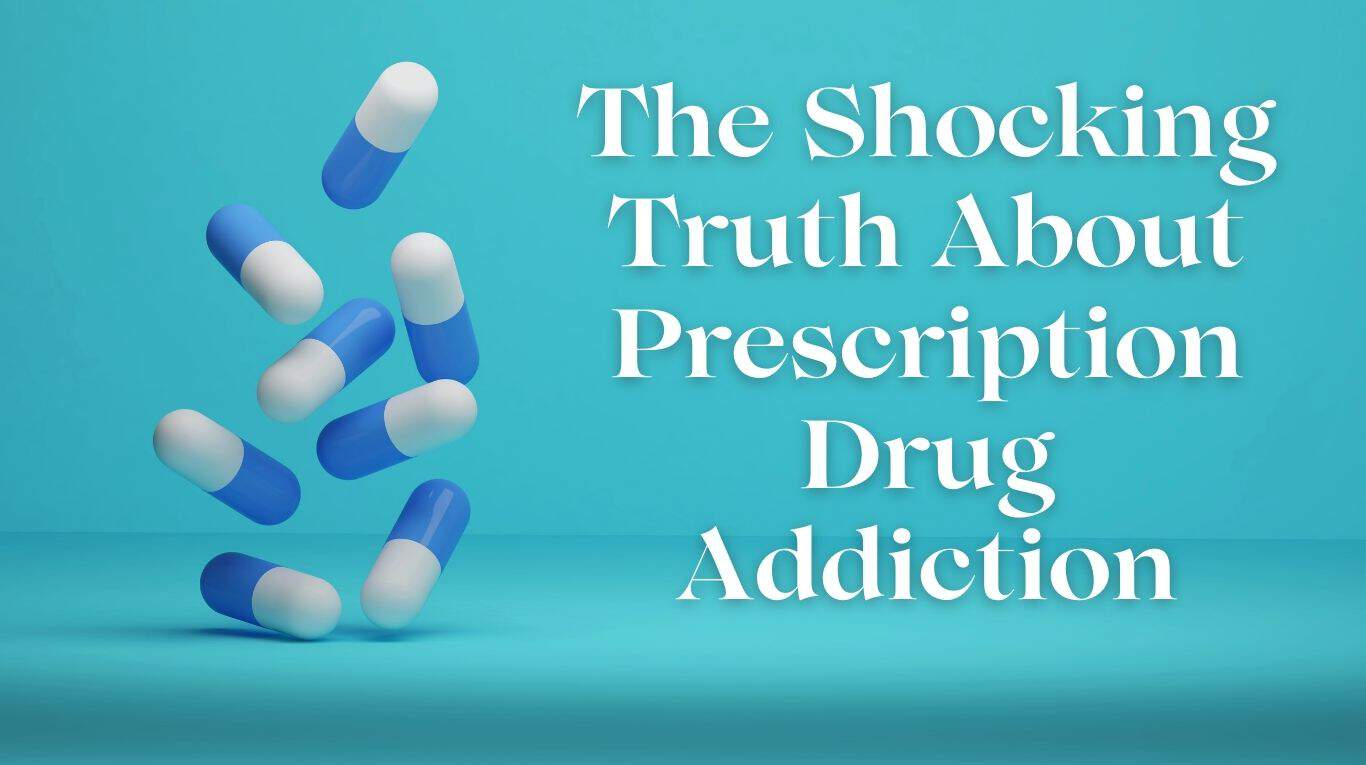An estimated 36 million Americans over the age of 12 have tried prescription drugs for non-medical reasons. This reveals a disturbing situation where easy access to prescription medicine leads to addiction.1. More than 10% of high school seniors admit to misusing drugs, not including heroin. This shows how serious prescription drug addiction The problem with prescription drug use is amongst teenagers.1. Moreover, an overwhelming 70% of addicts are hooked on painkillers. This fact stresses that dealing with opioid addiction is crucial for our health discussions2.
Opioids, highly addictive drugs, account for nearly 60% of prescription drug abuse cases. This highlights the massive impact of opioid addiction on our society and the need for comprehensive treatment of prescription drug issues.2. Despite these grim facts, there is hope. People showing drug dependence signs have ways to recover, thanks to ongoing intervention efforts.
The issue of prescription drug misuse is complex and always changing. It’s vital to grasp how widespread it is, who it affects, which drugs are most abused, and why effective treatment is key to overcoming opioid addiction.
Key Takeaways
- Roughly 36 million Americans have misused prescription drugs, showcasing a significant issue1.
- Teenagers and young adults face high risks of falling into prescription drug addiction1.
- Mostly, those abusing prescription drugs are addicted to painkillers, highlighting the opioid crisis2.
- Tackling opioid addiction through recovery and intervention is vital in health discussions.
- Knowing who is affected and what drugs are misused is crucial to fighting prescription drug addiction.
Understanding Prescription Drug Misuse and Its Consequences
Prescription drug abuse is a vital concern that affects people of all ages and backgrounds. It includes taking someone else’s medication, using a higher dose than what’s prescribed, changing the way to take them, or using drugs to feel high3. These risky behaviors come from not knowing how addictive these drugs can be or their dangers when not used properly.
Opioids, sedatives, and stimulants are drugs people misuse a lot. These can either slow down or speed up your brain and body in harmful ways. Abusing these drugs has caused a spike in overdose deaths, particularly with opioids. They lead to many emergency room visits and deaths4.
It’s key to spot the signs of prescription drug abuse early for intervention for addiction. Signs to look for include asking for more refills, mood changes, pulling away from friends or family, and acting out of character. Catching these signs early can lead to the right help and prevent worse health problems.
| Drug Category | Common Drugs | Potential for Misuse | Consequences |
|---|---|---|---|
| Opioids | Oxycodone, Fentanyl | High | Overdose, Respiratory Depression, Death |
| Sedatives | Valium, Xanax | Medium to High | Memory Problems, Coma, Death |
| Stimulants | Adderall, Ritalin | Medium | Heart Issues, Aggression, Hallucinations |
These scary facts highlight why it’s crucial to teach people about the risks of misusing prescription drugs. Through better education and stricter rules, we can lower these risks. Spotting and acting on signs of prescription drug abuse early, and helping people find resources for addiction treatment are key to fighting this problem34.
A Closer Look at Who Is Abusing Prescription Drugs
Prescription drug abuse is a huge problem. It affects teens, young adults, and the elderly alike. By knowing who is at risk, we can create better ways to treat and prevent drug addiction.
Demographics: Teenagers and Young Adults
Teenagers and young adults are especially prone to misusing prescription drugs. Reports suggest millions aged 12 to 25 have tried these drugs for non-medical reasons at least once5. They might think these drugs are safe because a doctor prescribes them. Despite this, the risk of getting addicted and facing serious health issues is real. This highlights the need for recovery programs that focus on young people.
The Growing Problem Among High School Students
High school students are also facing issues with prescription drug abuse. Research shows that more than 10% have misused drugs, like amphetamines and tranquilizers, for their effects6. It’s clear we need school programs and campaigns to stop these harmful choices.
Prescription Drug Abuse in Older Populations
Elderly people face their own challenges with misusing prescription drugs. They often have multiple prescriptions, which increases the chance of mixing drugs by mistake. This can lead to dependency and worsen health problems. Treating addiction in older adults must be handled with care.
Effective intervention and comprehensive resources are critical to curtail the expansive reach of prescription drug abuse.
Understanding who is most impacted by drug abuse helps us intervene in a caring, informed way. These efforts can lead to recovery and hope for those struggling. The aim is to provide knowledge and support through various means, ensuring a path to recovery.
Prescription Drug Addiction: Types of Drugs and Their Effects
Prescription drug addiction includes many substances, each with unique effects and risks. Knowing these drugs and spotting signs of dependence are key to getting help.
Categories of Commonly Abused Prescription Drugs
Three main kinds of prescription drugs are often misused: opioids, depressants, and stimulants. Drugs like Vicodin, Xanax, and Ritalin, meant to treat medical issues, can lead to addiction7.
- Opioids – mainly for pain relief, include codeine, fentanyl, and oxycodone.
- Depressants – for anxiety or sleep problems, include benzodiazepines and barbiturates.
- Stimulants – for ADHD or certain sleep issues.
Physical and Psychological Effects of Opioids, Depressants, and Stimulants
Abusing these drug types can harm the body severely. Opioids may slow breathing or spread infections through injections7. Depressants can cause hard withdrawal symptoms like fever and muscle pains, making quitting tough7. Stimulants might lead to dangerous heart rate increases or paranoia7.
The Dangerous Road From Prescription Use to Addiction
Using prescription drugs properly at first can lead to addiction. This risk is higher for those with opioid access, possibly moving to heroin if getting prescriptions becomes too hard8. People with past substance abuse or mental health issues face greater addiction risks8.
It’s crucial to understand these dangers and act swiftly if drug dependence signs appear. Getting help early can prevent lasting damage and serious outcomes798.
Intervention and Treatment for Prescription Drug Addiction
Fighting prescription drug addiction needs a solid base of knowledge, resources for addiction treatment, and ongoing support. It’s important to realize how big the problem is; over 18 million people in the U.S. aged 12 and up have misused prescription drugs. This is more than 6% of the country’s population10.
Intervention for addiction is key in guiding people towards getting better. The first step is often detox under medical watch. This can include the use of an FDA-approved buprenorphine implant. It releases medication for six months11.
Treatment after becoming stable may vary based on the drug and the person’s needs. For some, medications like methadone, buprenorphine, or naltrexone are very helpful. These have shown good results, especially for those in prison, helping them after they get out11.
Buprenorphine treatment started in the emergency room after an overdose can hugely boost the chances of long-term recovery11. Coupled with ongoing care and counseling, this method sets a strong foundation for getting better.
- Education on the risks of misusing prescription drugs is essential for effective substance abuse treatment.
- Mobilization of community support for a drug-free space
- Access to ongoing health and psychological care
The real challenge is not only in finding treatment but also in keeping up with recovery over the long haul. Nowadays, laws limit how many patients a doctor can help with prescription and over-the-counter medications related to these issues. This leaves a gap; there are about 1.3 to 1.4 million people who need treatment but can’t get it11.
Building a supportive community and better resources for addiction treatment are crucial. Resources like the Substance Abuse and Mental Health Services Administration crisis line are critical for those in need10.
The battle against prescription drug addiction is not just through medicine and therapy. It includes a widespread community effort to educate and prevent. It’s about creating strong communities ready to face and overcome the challenges of prescription drug misuse.
Breaking Down Myths and Acknowledging Realities
We need to clear up common Many myths about drug dependence contribute to the stigma surrounding prescription drug addiction treatment. to understand prescription drug addiction better. These myths often mix up the public’s view and influence policies. Recognizing the true nature of addiction is crucial for effective help and recovery.
One widespread myth is that addiction is just a lack of willpower or a moral flaw. But, the truth is, addiction changes the brain’s chemistry, as stated by the American Psychiatric Association. It’s not about lack of control, but about how the brain changes12. This shows we need a careful and kind approach to understanding prescription drug addiction, not blame.
| Myth | Reality |
|---|---|
| Addiction is a choice | Addiction is a chronic brain disease that alters brain structure and operation1213. |
| Only specific people get addicted | Anyone can face addiction, no matter their age, race, or wealth12. |
| Recovery is all about willpower | Recovery often needs personalized care, medicine, and community support12. |
| Relapse means you’ve failed | Relapse is a common recovery step and suggests adjusting the approach1213. |
Fighting these myths also means realizing recovery can begin anytime and science-backed treatments help a lot12. Help from professionals, like therapy and counseling, is key for overcoming addiction long-term13.
To truly break these myths, we must see the real issues of myths about drug dependence. We need everyone – communities, health workers, and policymakers – to help support those affected. Understanding prescription drug addiction better helps us react in more meaningful and supportive ways.
Conclusion
Many people across the country are fighting prescription drug addiction, with 14.3 million misusing drugs last year14. This problem is complex, involving factors like genetics and mental health15. Thankfully, there’s hope for those seeking prescription drug addiction treatment. With the right treatment, combining therapy and medicine, people are finding their way back15.
To beat drug addiction, both individuals and communities must work together. Offering help, from detox to therapy1415, is key to creating a healthier community. Safe practices in medicine use and storage can lower misuse, as seen with 12th graders14. Campaigns and surveys help prevent drug addiction by raising awareness15.
Recovery from prescription drug misuse is a group effort aimed at improving society’s health. Interestingly, most prescription drug users, about 84.1%, don’t misuse their medications16. It emphasizes the need for careful health management. By focusing on prevention and recovery support, we can change the story to one of hope and strength.
FAQ:
What is prescription drug addiction?
Prescription drug addiction refers to the compulsive use of prescription drugs despite harmful consequences. It can manifest through a desire to obtain the drugs for non-medical reasons or an inability to stop using them even when they no longer serve a therapeutic purpose. Many individuals develop an addiction to Many individuals struggle with prescription medications leading to abuse and addiction. that are intended to treat conditions such as pain, anxiety, or attention deficit hyperactivity disorder (ADHD), leading to a cycle of drug abuse.
What are the common types of prescription drugs that lead to addiction?
Commonly abused prescription drugs include prescription painkillers (especially opioids), prescription stimulants, and anti-anxiety medications. Prescription opioids are often misused for their euphoric effects, while prescription stimulants are commonly abused by individuals seeking to enhance focus or energy. The misuse of prescription medications can lead to serious health issues, including overdose and dependence.
What are the signs and symptoms of prescription drug addiction?
The signs and symptoms of prescription drug addiction can vary, but they often include an increased tolerance to the drug, withdrawal symptoms when not taking the medication, and continued use despite adverse effects. Individuals may also exhibit changes in behavior, such as secrecy regarding their drug use, neglecting responsibilities, and social withdrawal. Recognizing these symptoms of prescription drug misuse is crucial for timely intervention.
How does misuse of prescription drugs happen?
Misuse of prescription drugs occurs when individuals take prescription medications in a manner not intended by the prescribing doctor. This can include taking larger doses, using someone else’s medication, or using the drug for recreational purposes. Factors contributing to prescription drug abuse may include peer pressure, a history of substance abuse, or mental health issues that drive individuals to seek relief through drug use.
What are the effects of prescription drug addiction on health?
The effects of prescription drug addiction can be devastating. Over time, individuals may experience physical health problems, including
Source Links
- Prescription Drugs Fast Facts – https://www.justice.gov/archive/ndic/pubs5/5140/index.htm
- Prescription Drug Abuse Statistics – NCDAS – https://drugabusestatistics.org/prescription-drug-abuse-statistics/
- Prescription Drug Misuse: MedlinePlus – https://medlineplus.gov/prescriptiondrugmisuse.html
- Prescription drug abuse – Symptoms and causes – https://www.mayoclinic.org/diseases-conditions/prescription-drug-abuse/symptoms-causes/syc-20376813
- Prescription Drug Abuse (for Teens) – https://kidshealth.org/en/teens/prescription-drug-abuse.html
- Prescription Drug Abuse: From Epidemiology to Public Policy – https://www.ncbi.nlm.nih.gov/pmc/articles/PMC4250400/
- Prescription Drug Addiction: Abuse, Types, Symptoms & Causes – https://www.primroselodge.com/prescription-drug-addiction/
- Prescription Drug Abuse & Addiction Treatment Near Me – https://americanaddictioncenters.org/prescription-drugs
- Substance use – prescription drugs: MedlinePlus Medical Encyclopedia – https://medlineplus.gov/ency/patientinstructions/000798.htm
- Prescription Drug Abuse – https://www.webmd.com/mental-health/addiction/abuse-of-prescription-drugs
- How can prescription drug addiction be treated? | National Institute on Drug Abuse – https://nida.nih.gov/publications/research-reports/misuse-prescription-drugs/how-can-prescription-drug-addiction-be-treated
- Gateway Rehab – https://www.gatewayrehab.org/blog/debunking-myths-about-addiction-recovery
- Debunking Common Addiction Myths – Addiction Treatment Center in Florida – https://sarasotaaddictionspecialists.com/2024/09/02/debunking-common-addiction-myths/
- Prescription Drug Addiction – Recovery Services of Connecticut – https://recoveryservicesct.com/treatment/prescription-drug-addiction/
- Drug Use and Addiction: MedlinePlus – https://medlineplus.gov/druguseandaddiction.html
- Results from the 2015 National Survey on Drug Use and Health reveal alarming trends in prescription drug use. https://www.samhsa.gov/data/sites/default/files/NSDUH-FFR2-2015/NSDUH-FFR2-2015.htm
Katie is a Licensed Clinical Social Worker who has worked as a primary therapist, supervisor, and now clinical director for SUD/MH treatment centers for the past 12 years. Katie is trained in Brainspotting, EMDR, Internal Family Systems and Dialectical Behavior Therapy and is passionate about treating substance use disorders, trauma and grief.






